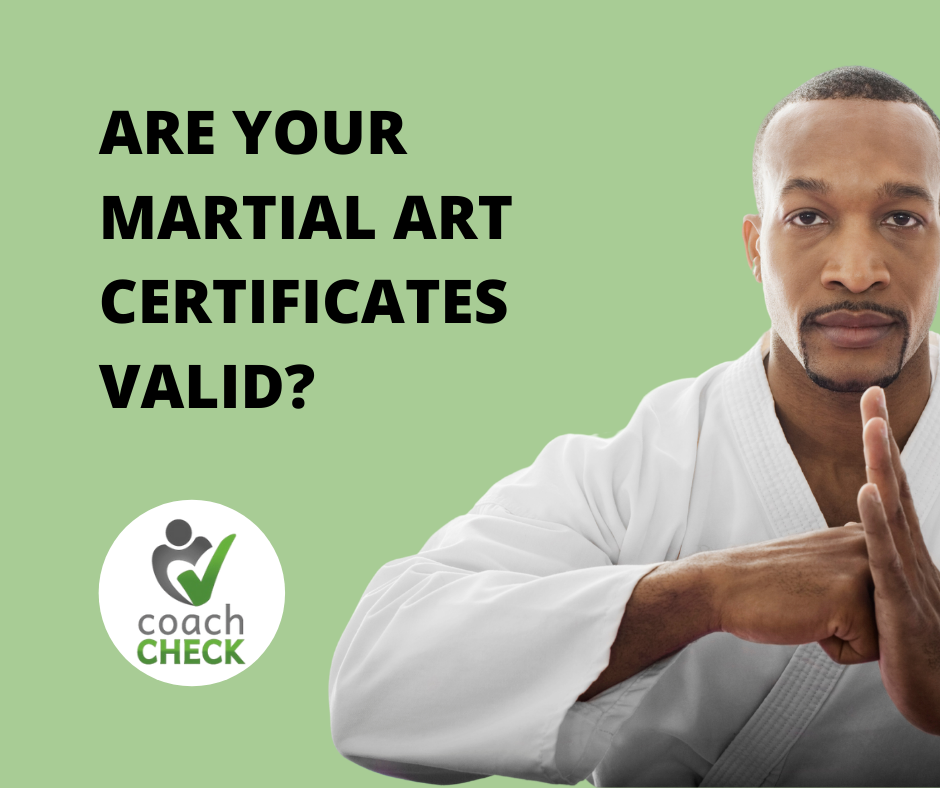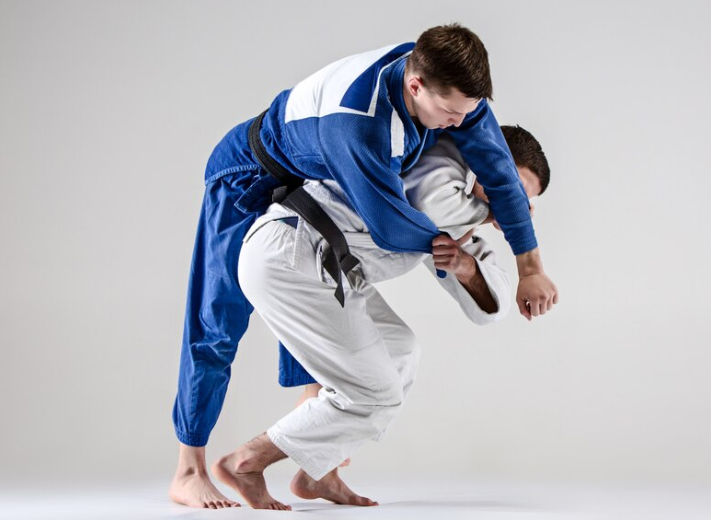The purpose of a credential certificate in any profession is to provide public reassurance that a person who holds the credential has met a minimum requirement with the standards of a particular organisation. The certificate provides a historic record of skills achieved and used as evidence for employers and other authorities. Certificates may be considered “endorsed” or “non-endorsed!” An endorsed Certificate is one that has been scrutinised and approved by an external and impartial body or authority, usually a Government Department similar authorised education authority! A “non-endorsed” Certificate is one that is issued by an organisation to acknowledge an individual’s achievement over a period.
If you are issuing a certificate or receiving a certificate the following points are important to know!
The Martial Arts Certificate
Martial arts grading certificates that are issued by a martial arts school or by their overriding organisation are considered “non-endorsed.” This does not devalue the certificate by any means, it simply means the testing usually has not been scrutinised by an external authority, such as a government department. Based on the many variants of martial arts styles and organisations it is fair to say that it would be difficult to effectively and fairly do so!
A more pragmatic approach in the assessment of a student’s martial arts skills is necessary to ensure fairness in issuing grades. Every student develops martial art skills individualistically! For example – if five people were asked to paint a picture of a tree, each painting would look different based on the painter’s interpretation of what they see. The same can be said for martial arts, after all it is an art as well! What remains consistent in martial arts, is the hard work, commitment, sweat and tears, so its understandable that the student holds a strong emotional connection with the martial arts certificate.
Martial arts certificates are issued based on the “hard skills” (practical skills) learned over time. Whilst grading requirements vary from one organisation to another, all are usually cognizant of the agreed requirements of the organisation. In terms of a sentimental and historic record of memorable achievement, the martial arts grading certificate cannot be overstated.
“Soft Skills” such as teaching skills, exercise science, theoretical knowledge, communication, risk management, legal and ethical responsibilities and child safety is knowledge that is causally related to martial arts but need to be studied away from the martial arts curriculum. “Soft Skills” are more easily endorsed by external authorities because they revolve around set learning outcomes that meet establshed industry norms.
Endorsed Certificates
Certificates issued by an organisation that carries the stamp or logo of an authorised external body, may be considered “endorsed” certificates. An “endorsing” organisation must not be confused with a sponsor or supporter. If other logos appear on a certificate, they should be clearly identified as a supporter, sponsor or endorsing organisation.
An endorsing organisation may be a government department, or a private organisation recognised as an industry authority, who provide a protocol that includes “impartial” evaluation services for endorsement of programs.
Non-Endorsed Certificates
Certificate such as a martial arts grading certificate or certificates that are purely “in house” are considered non-endorsed. The martial arts certificate holds great sentimental value and is often considered more important to the student than any other certificate achieved. We can never undervalue the martial arts certificate, it is issued based on years of sweat, emotional ups and downs and transformation of the student being graded.
Employer’s will hold in high regard, the non-endorsed Martial Arts grading certificate but in this modern age they also want to see evidence that a prospective employee has undertaken (or intends to undertake) some form of “endorsed” training to meet the requirements of the job. Employers in all professions have a responsibility to ensure that staff are “fit and proper” for the job. It is a part of their own KPI’s.
All “qualification” holders regardless of holding endorsed or non-endorsed certificates have a responsibility to maintain “current” within the industry of one’s origin. You can do this by undertaking “professional development” relevant to your industry. Professional development could be attending a trade show, undertaking a course online, attending a seminar or workshop, even attending a tournament, or undertaking officiating or refereeing experience. Yes, just about anything! Most professional industry sectors require a minimum accumulation of 20 professional Development Points (PDP’s) over a 2 year period.
Issuing Certificates
If you are responsible for issuing certificates in your organisation, remember; the certificates you issue held dear by the recipients and so you must ensure their integrity – how will they be considered in 20 years’ time? The certificates you issue are a formal reminder of the time they had with you and their goals achieved.
Aesthetics of the certificate are organisation driven, so how the certificate looks is up to you and your design team, or you may be using your organisations template, whatever the case you need to ensure certificates include certain criteria to ensure integrity.
I have contextualised common “rules of evidence” as a reference point from which you can begin.
Rules of Evidence include: – Validity, Sufficiency, Authenticity, Currency.
Validity – Is the Certificate valid?
Is the Certificate a true assurance that the learner has the skills, knowledge and attributes as described in the organisational requirements for the level achieved. Ideally you should have organisational documentation that clearly presents these requirements, so that the standard remains consistent even if one day you will not be around. This documentation may be written in your organisational policies or in the grading syllabus.
Is the organisation from which the Certificate was issued, “contactable?” It is important to be able to identify counterfeit or fraudulent certificates! So ensure that your club is conatctable! This may be the organisation phone number, web address or email. Whilst not all organisations will survive the test of time, its still important to do your best to create the best certificate possible right now!
Example: Has the student been issued with a certificate from an unknown and uncontactable source? If so, it would be difficult to determine the certificate “valid!”
Sufficiency – Is the Certificate sufficient to be accepted by another club or potential employer?
Does the certificate meet organisational requirements so that it allows the student to be recognised by a new club within the organisation at that level? Does it meet “official” organisational guidelines?
Example 1: Young Johnnie from Lee’s Taekwondo in Atlanta, arrives for training in Lee’s Taekwondo in Miami with only his belt and what appears to be an “unofficial” or “non-valid” certificate. In this case the Certificate may prove insufficient as evidence, and as a result retesting the student may apply. This will call into account the integrity of the original issuing club.
Authenticity – Is the certificate “authentic?”
Does the certificate (especially dan grade) present with original signature/s of office bearers of the issuing organisation, or under the authority of the issuing organisation if computer generated! Yes, it is OK to be computer generated, so long as the issuing organisation is contactable for verification. Also a certificate cannot be deemed as authentic if the signatory at the date of the signing of the certificate is deceased or the signature is clearly a deception or forgery.
Example: Many organisations now use up to three signatories on black belt certificates. The signatures are original and may sometimes also have the personal stamp of the signatory/s, called a “Hanko.”.
Currency – Is the certificate deemed current!
A professional certificate can only be officially deemed “current” if ongoing professional development can be proven. All Certificates hold a time limit for purposes of maintaining professional standards. A certificate will remain current only if the certificate holder can demonstrate “currency” with industry standards. To maintain “currency” the practitioner must undertake and document continuous learning. Acquiring 20 PDP’s (Professional Development Points) every 2 years is often considered a fair and acceptable standard for maintaining “currency.”
Example: If I trained in Karate 20 years ago, received my black belt and decided to make a comeback in teaching, it would be unrealistic to assume that it would be possible to do so without some professional upskilling or refresher training.
Never underestimate the power of the martial arts certificate! Make sure the certificate that you issue will stand the test of time and be looked upon favourably in 20 years-time. If we issue martial arts grading certificates, we must understand that they make up just one part of the equation, never should they be purported a qualification that overrides all other industry norms such as formal training in safety, business management, ethical responsibilities, and exercise science, these need to be undertaken separately and to be of value as a PDP program, the PDP program should be assessable – meaning there should be some form of “scored” assessment at the end.
For more info on Professional Development programs visit www.coachcheck.com and click on the PDP link on the top toolbar!



